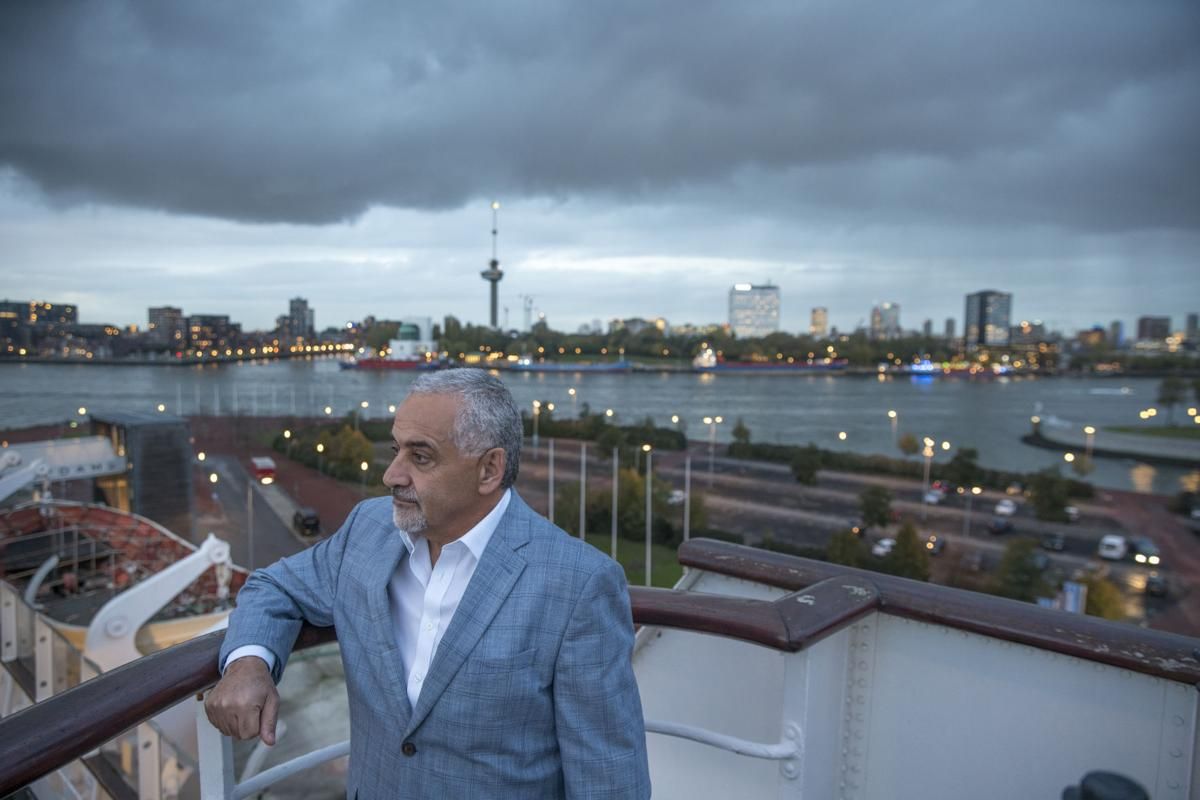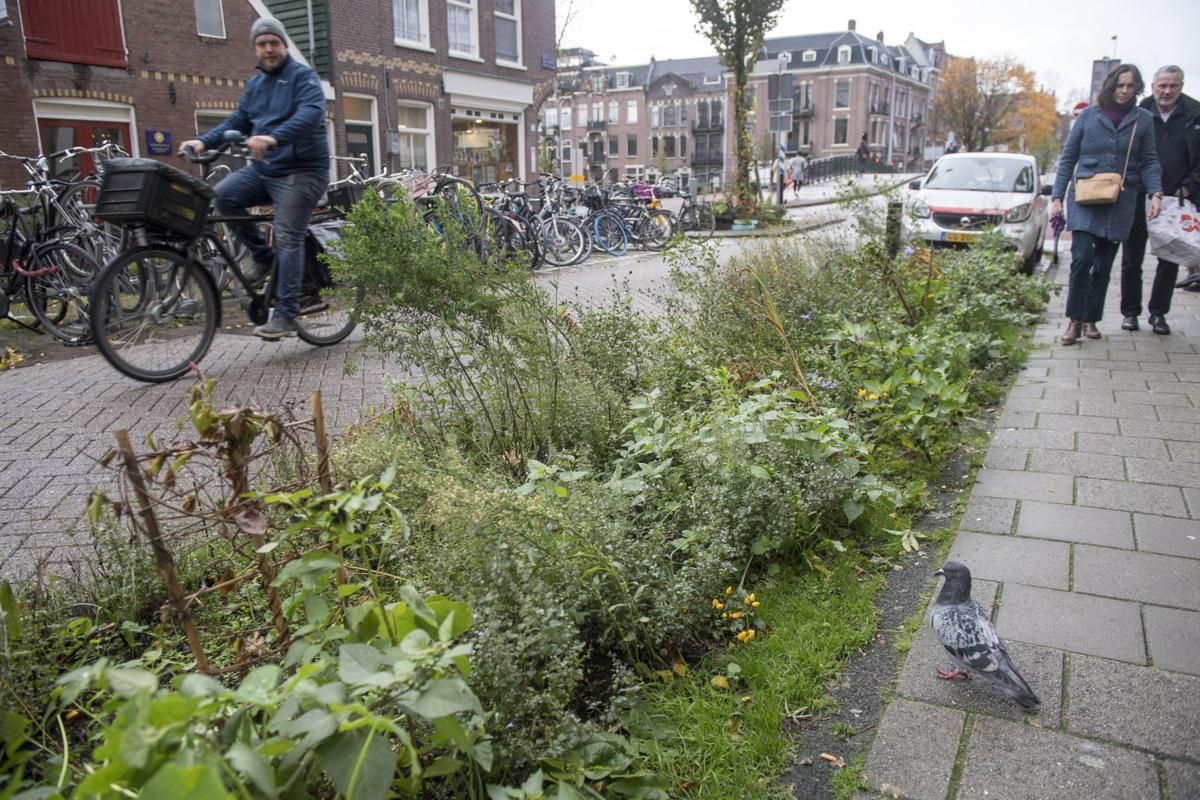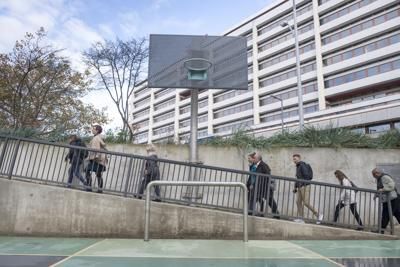A delegation of academics and officials attended the Amsterdam International Water Week Conference in November, on a trip funded by the Consulate of the Netherlands.
Among them was Sewerage & Water Board executive director Ghassan Korban. Reporter Tristan Baurick and photographer Chris Granger of The Times-Picayune and The Advocate and WWNO reporter Tegan Wendland took their own trip to the Netherlands to better understand how Dutch strategies for managing water and storm surge have evolved in an era of rising seas and climate change.
Wendland talked with Korban aboard the SS Rotterdam, where he discussed what he learned during his week in the Netherlands and what ideas and approaches might work in New Orleans. The following is excerpted from their interview.
Wendland: Tell us a little bit more about the impetus for this trip.
Korban: Ever since I got the job as the executive director of the Sewerage & Water Board, everybody kept telling me, 'You've got to go to Amsterdam, you've got to go to the Netherlands.' And I understood that there's a long history between our city and the Netherlands in general, but Amsterdam specifically, and there has been a lot of back and forth. And I just wanted to see for myself the best practices and the resiliency approaches that they take….They don't take it for granted there. It's not an end game for them. It's an ongoing effort to continuously improve their resiliency and protect their city. And that's the kind of culture and thought process I want to take back... to create this the same culture of large-scale (projects.)
Wendland: What are some of your takeaways?
Korban: My first impression was the scale of the projects that we saw... The 'Make Room For The River' was just fascinating. Again, you know, just the magnitude and the acreage that was consumed to create a solution, a natural-based solution for maintaining the delivery of the river, for example, that was very fascinating. As you probably know, we visited a testing facility where we saw a 'flume' that was about 300 meters long, about 900 feet, that tests new designs for levees or dikes so that they can make sure that they work, and they can withstand extreme conditions and high waves and such. So it was very, very exciting to witness. The scale of that was just remarkable.
We also saw a 'water square' and we learned a couple of things. Some were intentional and some were not. Obviously, in the middle of the heart of a city, they had recognized a blighted area, according to their commentary. And they created this basin to capture water if needed. But also, when that's not needed, they created the space that attracts people. They had a basketball court. They had a mini soccer court. But one thing that was interesting, which was as real as anything that we see in our city, New Orleans, was the challenge of maintenance. This goes to show the challenges and the costs associated with building infrastructure. You know, aside from the capital investment is the ongoing maintenance costs that we all have to consider when we build these new infrastructures that are much needed.
Wendland: So what are some urban water management projects that you've seen here that might be transferable to New Orleans?
Korban: Well, certainly the water square is one — a lot of permeable surfaces that...are very prevalent anywhere you go (in the Netherlands.) Parking lots are more permeable than not. The parking lanes that you see are. They're creating these mini pockets of green space in places that maybe didn't exist before. Again, to just encourage retaining some water before it makes its way to the river or the canals.
Wendland: Of course, I have to follow up by asking — why can't we do some of these things at home?
Korban: Well, we can. I think what we're seeing here is a culture that started maybe a little bit sooner, adopting these new strategies and processes — and it's a way of life, a way of doing things for them — and for us, we have just started. We just need to keep that momentum going. We need to grow it. We need to bring more ownership on the part of the private sector and residential owners to participate in those solutions, much like they do here. They use an example here [in the Netherlands], that the footprint of the public space is 40 percent versus the private properties are 60 percent. So if you wanted to create solutions and capture water where it falls, you must use the private footprint to do that, because currently, and especially in our city, that space is very underutilized. We're not using it for capturing water like we should. So, while we have to do our part on the public part, whether it is the neutral ground, whether it's permeable surface, whether it's pocket parks here and there, again, we need to encourage the citizens of our city to participate and do their part.
Wendland: Right — a lot less public land, when you break it down in terms of percentage, in New Orleans.
Korban: Absolutely.
Wendland: Now, people pay a lot of taxes here and they also seem pretty happy to pay for their safety. So I wonder if this experience has made you think any differently about something like a stormwater tax?
Korban: Well, again, it's taken for granted. It's in their constitution to protect the citizens against flooding. So it's ingrained in people that this is what this country does collectively, collaboratively. So that's why the paying of the taxes toward those services is normal. It's routine. But at the same time, the government is delivering. So there's that level of confidence that 'I'm paying for a service to the government or to agencies and they are delivering and protecting me.' So that's the level of confidence I want to be at in New Orleans to be able to start asking for consideration of a stormwater fee. I mean, I think it's the way to go. I think it's the only steady and long-term way to fund a robust and reliable drainage system in the city. But again, we're at a point where we need to gain confidence. We need to create a plan that makes sense, that's generated by having a lot of public input first. So we understand what people want. What people expect, is what we're doing now sufficient? Do we need to improve the costs associated with those improvements? And then we can have that plan presented as a master plan and then cost it out. And then that's when the conversation would be had in terms of what the real costs are per property.
Wendland: What are some of the most surprising things you've seen or learned?
Korban: Oh, boy. How real things are in terms of — it's not all perfect. And they just keep marching on. Like in Amsterdam, I just heard an interesting fact that, where they have a lot of designed canals that serve to drain the system very well, but it's also an issue —12,000 bikes are just dumped in those canals on a yearly basis. So obviously it's a constant maintenance challenge that creates for the entities that they're responsible for cleaning the canals.
Wendland: So we can make our canals a lot more visible and celebrate them, but we might have to pull out 12,000 bikes each year...
Korban: Or maybe educate the public to respect the main purpose of those canals and not to do that, maybe.
Wendland: Lastly, one of the things that has really struck me is how much of this stuff is already part of the Urban Water Plan that the city already has — so where does the city's commitment to that plan stand?
Korban: I think it creates a very wonderful baseline for what we should aim for. Obviously it's a conceptual plan. It mimics a lot of what Amsterdam has done and other cities in the Netherlands. My challenge today is — I need to focus a little bit on the basic infrastructure, to get it to a place where it's more stable, before I can push harder and bring this added layer of protection. So as we develop that master plan, we'll have to work very hard not to lose sight of that, but also to improve our grey infrastructure, because that is really the main tool to keep our drainage capacity viable. But then the Living with Water (plan) adds a layer of protection and enjoyment so that our city can flourish as we move forward in the future, so we're not satisfied with the current status quo in terms of what we can pump on a daily basis during an event.



